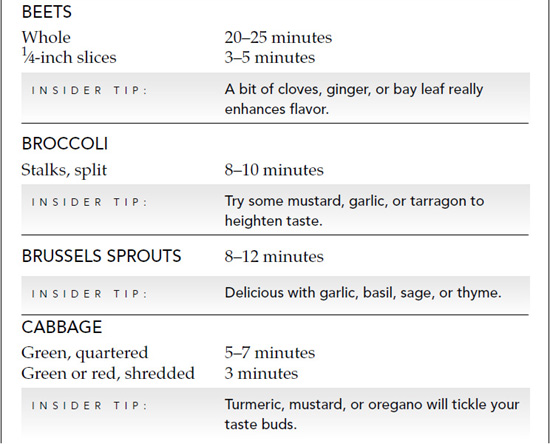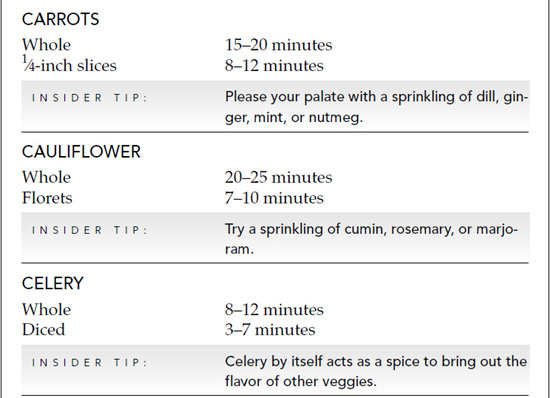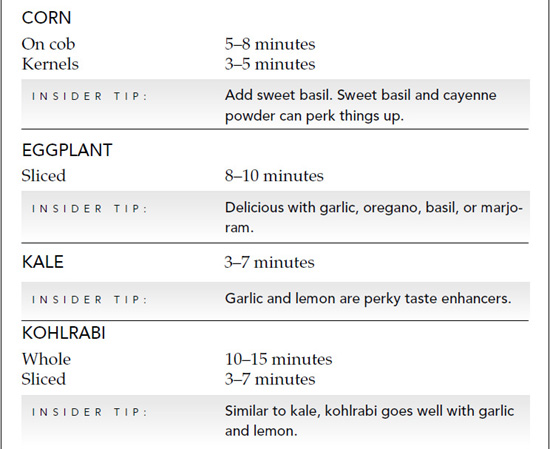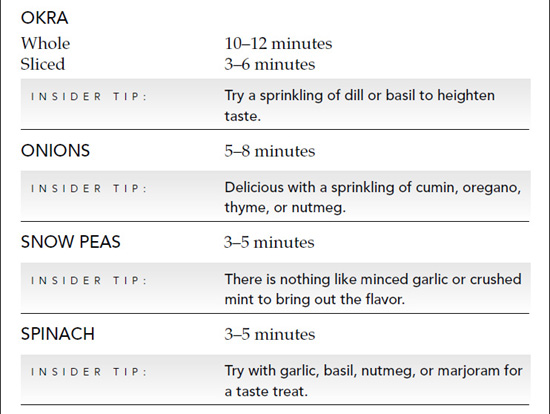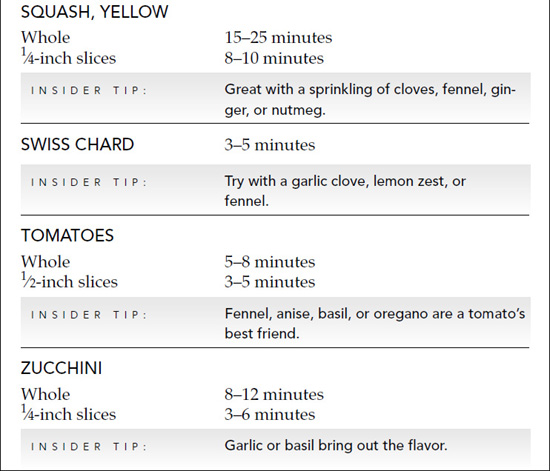The Fat Flush Cookbook (14 page)
Read The Fat Flush Cookbook Online
Authors: Ann Louise Gittleman

1 tablespoon olive oil
2 pounds lean ground beef
1 cup Fat Flush bread crumbs (
page 203
)
¾ cup onions, chopped
1 teaspoon dried oregano
1 tablespoon dried horseradish
1 teaspoon dried mustard
½ cup Fat Flush Catsup (
page 206
)
2 eggs, beaten
Preheat oven to 350°F. Grease an 8-by 4-inch loaf pan with the olive oil. In a large bowl, mix the beef, bread crumbs, onions, oregano, horseradish, mustard, catsup, and eggs together. Shape into a loaf and place in the loaf pan. Bake for 11/4 hours or until done.
P
HASE
3; S
ERVES
8
The coconut milk is a saturated fat rich in antiviral substances that boost the immune system. Coconut milk and coconut oil are both making a comeback and certainly can be used in moderation in a balanced lifestyle program like phase 3 of Fat Flush.
1 pound lean ground beef
1 onion, finely chopped
2 garlic cloves, minced
1 egg, beaten
4 tablespoons plus ½ cup coconut milk, divided
1 teaspoon ground cumin
1 teaspoon ground coriander
¼ teaspoon cayenne
½ teaspoon salt
3 tablespoons fresh cilantro, chopped
Preheat broiler. In a large bowl, mix beef, onion, garlic, egg, 4 tablespoons of coconut milk, cumin, coriander, cayenne, and salt. Form into golf-ballâsize meatballs and place on a nonstick broiling pan. Broil until meat is browned and no longer pink inside. Remove meatballs onto a serving dish and discard fat. Pour in remaining coconut milk making sure to dissolve all browned residues. Add cilantro, stirring until blended, and pour over meatballs. Serve immediately.
P
HASE
3 S
PECIAL
O
CCASION
; S
ERVES
4
The date sugar provides the sweetness in this recipeâas well as fiber, potassium, and trace minerals.
2 pounds lean beef for stew, cubed
¼ cup 1-2-3 Beef Broth (
page 223
)
2 cups no-salt-added diced tomatoes
â
cup date sugar
â
cup apple cider vinegar
½ cup onion, chopped
3 whole cloves
1 bay leaf
1 green pepper, cut into thin strips
In a large skillet over medium heat, heat broth. Add beef and brown on all sides. Add tomatoes, date sugar, vinegar, onion, cloves, and bay leaf, blending well. Lower heat, cover, and simmer for 2 hours or until beef is tender. Add pepper strips and cook for 10 minutes. Remove cloves and bay leaf before serving.
P
HASE
3 S
PECIAL
O
CCASION
; S
ERVES
4
The delicate flavors of the allspice, ginger, and cinnamon will transport you to Morocco.
2 tablespoons plus 1½ cups 1-2-3 Chicken Broth (
page 222
), divided
1 onion, chopped
2 pounds boneless lamb, trimmed and cut into 1½-inch cubes
½ teaspoon ground anise
½ teaspoon ground ginger
1 16-ounce can no-salt-added peeled tomatoes
1 3-inch cinnamon stick
1 cup carrots, halved and cut into ½-inch pieces
2 cups yellow squash, cut into 1-inch cubes
1 cup celery, cut into ½-inch pieces
Fresh parsley for garnish
Sauté onion in 2 tablespoons of broth in a skillet. Add lamb, anise, and ginger and cook until brown. Add tomatoes, additional broth, and cinnamon stick, cover, and cook over low heat for 40 minutes. Uncover, add carrots, squash, and celery and cook a further 15â20 minutes or until lamb and veggies are tender. Sprinkle with chopped parsley before serving.
P
HASE
3; S
ERVES
8
A friend created this recipe and says that Asparagus with Lemon-Herb Dressing (
page 145
) is a tasty companion.
½ cup apple cider vinegar
¼ teaspoon cayenne
1½ teaspoon dried oregano, crushed
½ teaspoon dried rosemary, crushed
½ cup onion, minced
1 garlic clove, minced
1½ pounds lamb, trimmed and cut into 1½-inch cubes
8 whole mushrooms
1 medium red pepper, seeded and cut into 8 pieces
8 small, whole boiling onions, parboiled
4 skewers
In a medium bowl, combine the vinegar, cayenne, oregano, rosemary, onion, and garlic for a marinade and mix well. Add the lamb, making sure to coat evenly with marinade. Cover and let marinate in the refrigerator overnight. Remove lamb from marinade. Make kebabs by alternating the lamb with mushrooms, red peppers, and onions on the skewers. Cook over grill or barbecue for 15â20 minutes turning, the skewers repeatedly, until the meat is done and nicely browned.
P
HASE
3; S
ERVES
4
This dish is so simple, it is sinful. You are sure to get many compliments on this.
8 baby lamb chops, trimmed of all visible fat
8 tablespoons unsweetened apricot preserves
½ teaspoon ground ginger
Preheat broiler. Place chops on nonstick broiling pan. In a small bowl, mix apricot preserves with ginger. Spread ½ of mixture over top of the chops. Broil for 5 minutes. Turn over and spread remaining preserves over other side. Broil another 5 minutes or until cooked through.
Variations
:
⢠Substitute unsweetened peach preserves for the apricot preserves and replace ginger with (or add) a dash of cinnamon.
⢠In place of the apricot preserves and ginger, try marinating the lamb chops in â
cup unsweetened pineapple juice with ½ tablespoon Fat Flush Curry Seasoning (
page 204
) and then broiling.
P
HASE
3 S
PECIAL
O
CCASION
; S
ERVES
4
7
Vegetables
Rainbow-colored vegetables play a major role in Fat Flushâthe more vibrant the pigment, the more packed with health-promoting antioxidants. The vegetable recipes contain lots of calcium-rich, dark, leafy greens (spinach and kale) that are also good sources of folic acid (which prevents birth defects) and vision protective lutein. Yellow-green selections include peas (phases 2 and 3) and corn (phase 3), which also contain lutein as well as zeaxanthin, another plant-based antioxidant which helps to prevent cataracts and macular degenerationâthe most common cause of blindness in the elderly. You will find yellowish orange selections (like phase 2 acorn squash, sweet potatoes, and carrots) bursting with beta-carotene. And there are many dishes featuring tomatoes, cooked tomatoes, and tomato sauceâtasty sources of lycopene, the red compound that is a powerful aid in supporting prostate and breast health. The white-green vegetable choices such as onions, garlic, mushrooms, endive, leeks, and celery provide us with allicin and flavonoids which are cell protectors and strengthen immunity.
When it comes to veggies, think blue-purple (eggplant and cabbage), red, orange-yellow, and green. These veggies are best stored, by the way, loose or in plastic bags that are perforated so that the veggies can breathe. And store your veggies in a separate bin from fresh fruits. Many fruits like pears and apples, for instance, produce a ripening gas called ethylene which can alter the taste of vegetables
When it comes to color, there is nothing more visually vibrant than heirloom vegetables. These veggies (and fruits, by the way) are making their way back onto America's tables. These are specialty vegetables with all their original genetic characteristics intact as were veggies before modern agriculture replaced them with hybrids that were designed to have a longer shelf life, were easier to ship, and were easier to process through machine harvesting.
The heirlooms are definitely more colorful and packed with higher nutritional values. Some kinds of heirloom corn, for example, are true powerhouses of proteinâproviding nearly three times the amount of protein
of today's hybrid corn. Some kinds of heirloom apples are richer sources of vitamin C than your typical orange.
Today heirlooms can be found in upscale grocery stores, in farmers markets, and on roadside stands. Or you can grow your own from seeds, which are available in health food stores, at upscale grocery stores, or from seed supply companies on the Internet. The main reason for this renaissance, however, probably has nothing to do with nutrition or health. The taste of these heirlooms is simply out of this world.
Whether you are enjoying fresh, organic, or heirloom produce, the rule of thumb is simply this: If fresh or frozen are unavailable, than the next best are canned or jarred with no added salt. First and foremost, look for the words “no salt added” and/or “no sugar added” on the label for both canned and jarred veggies. When it comes to other additives or preservatives (such as EDTA, ascorbic acid, and citric acid, for example), the least amount the better, although these have no known toxicity.
By the way, Del Monte and Ready Pack Leafy Greens Blend have pre-washed and precut fresh greens in plastic bags. So now there's really no excuse for
not
eating your greens because it doesn't get any easier than prewashed and ready cut! Spinach, chard, kale, collards, and turnip and mustard greens are a great source of folic acid and nondairy calcium on Fat Flush, as you may remember from
The Fat Flush Plan.
From a practical standpoint, the best cooking news about vegetables is this: With a small, stainless steel steamer you can have maximum taste with a minimum of effort. The veggies can be crisply tender or firm and crunchy. When veggies are cooked this way, on the average, they take only 10â15 minutes. Of course, the tougher ones, like artichokes take longer.
So before you delve any further, take a look below at our Fat Flush Vegetable Steaming Guide. I know you will enjoy experimenting with the herbs and herb blends that can be used for each and every phase of the plan. Many of these herbs can single-handedly or in combination take an ordinary veggie from simple to sublime in minutes.
Remember that when seasoning your veggies (or even main dishes for that matter) with herbs, the basic ratio for fresh to dried is 3:1. In other words, for dill you would replace 3 teaspoons or 1 tablespoon of fresh dill with 1 teaspoon of dried dill.
Any vegetable can be further accented with a drizzle of flaxseed oil, a baste of chicken, beef, or veggie broth, lemon juice, and herbs for phases 1 and 2. For phase 3, you can widen your taste horizons with a drizzle of olive, grape seed, or sesame oil for lifestyle eating and enjoyment. In phase 3, you can further experiment by also adding some crunch to your vibrant veggies in the form of toasted pine nuts, almonds, walnuts, filberts, and pumpkin and sunflower seeds to your vegetablesâwhether sautéed or steamed.
Insider Tip:
When steaming veggies, use purified water. After the veggies are steamed, you can save this nutrient-rich water and add it to your ready-made or home-made broths for extra vitamins, minerals, and flavor.
Insider Tip:
If steaming is not your thing, how about roasting your veggies in a hot oven. Roasting helps to potentize flavors in phase 2 and 3 favorites (think sweet potatoes) because the natural sugars caramelize.
Simply Grilled Mushrooms and Onions
I Can't Believe It Isn't Garlicky Mashed Potatoes
Kari's Marvelously Mashed Cauliflower
Asparagus with Flaxy Lemon-Herb Dressing
Green Beans with Garlic and Spice
Carrots and Snow Peas with Parsley
Cauliflower and Peas in Yogurt

